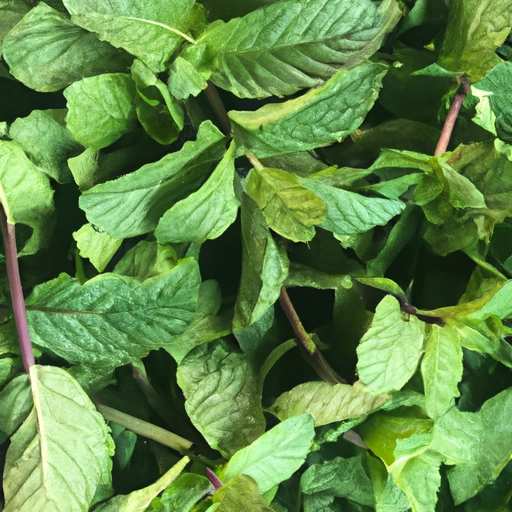Spearmint
Description

Spearmint, also known as garden mint, common mint, lamb mint, and mackerel mint, is a species of mint native to Europe and Asia. It is characterized by its distinctive, refreshing aroma and bright green leaves. Spearmint is a popular herb in both culinary and medicinal applications, known for its cool, sweet flavor that distinguishes it from other mint varieties such as peppermint.
Common uses
Spearmint is commonly used to flavor a variety of food products, including chewing gum, candies, toothpaste, and mouthwashes. Its fresh leaves are also popular in cooking and can be used to make tea, syrups, jellies, and sauces. Additionally, spearmint is often added to alcoholic and non-alcoholic beverages, salads, and desserts for a refreshing taste.
Nutritional value
Calories
Spearmint is low in calories, with approximately 5 to 6 kcal per tablespoon (about 3.5 grams or 0.12 ounces).
Protein
It contains a minimal amount of protein, roughly 0.2 grams per tablespoon.
Fat
Spearmint is virtually fat-free, with less than 0.1 grams per tablespoon.
Carbohydrates
There are about 0.9 grams of carbohydrates per tablespoon of spearmint, mostly in the form of dietary fiber.
Vitamins
Spearmint is a good source of vitamins, particularly vitamin A and vitamin C. It also contains some B vitamins in small amounts.
Minerals
The herb provides minerals like iron, potassium, and calcium, contributing to its nutritional profile.
Health benefits
Spearmint is known for its potential digestive benefits, including relief from symptoms of indigestion, gas, and nausea. It also has anti-inflammatory properties and may contribute to improved oral health. Some research suggests that spearmint can help with hormonal balances, particularly in women with hormone-related conditions.
Potential risks
While spearmint is generally safe for consumption, excessive intake can lead to side effects such as heartburn or allergic reactions in sensitive individuals. Additionally, due to its effects on hormones, people with hormone-sensitive conditions should consult a healthcare provider before consuming large amounts of spearmint.
Common recipes
Spearmint is used in a variety of recipes, including tabbouleh, mint chutney, mojitos, mint juleps, and mint tea. It is also used in sauces for lamb dishes and as a garnish for desserts.
Cooking methods
The leaves are often used fresh but can also be dried for longer storage. Spearmint can be infused into oils or vinegars, muddled into cocktails, or chopped into salads.
Pairing with other ingredients
Spearmint pairs well with fruits such as strawberries, watermelon, and citrus, as well as with other herbs like basil and cilantro. It complements chocolate and other sweet flavors, making it a versatile ingredient in both sweet and savory dishes.
Summary
Spearmint is a refreshing herb widely used in a variety of culinary applications across the globe. With its low caloric content and potential health benefits, it adds flavor and nutrition to dishes without contributing excessive calories. While it is generally safe to consume, individuals with specific health conditions should be mindful of their intake. Spearmint's versatility in the kitchen makes it a staple for both home cooks and professional chefs alike.